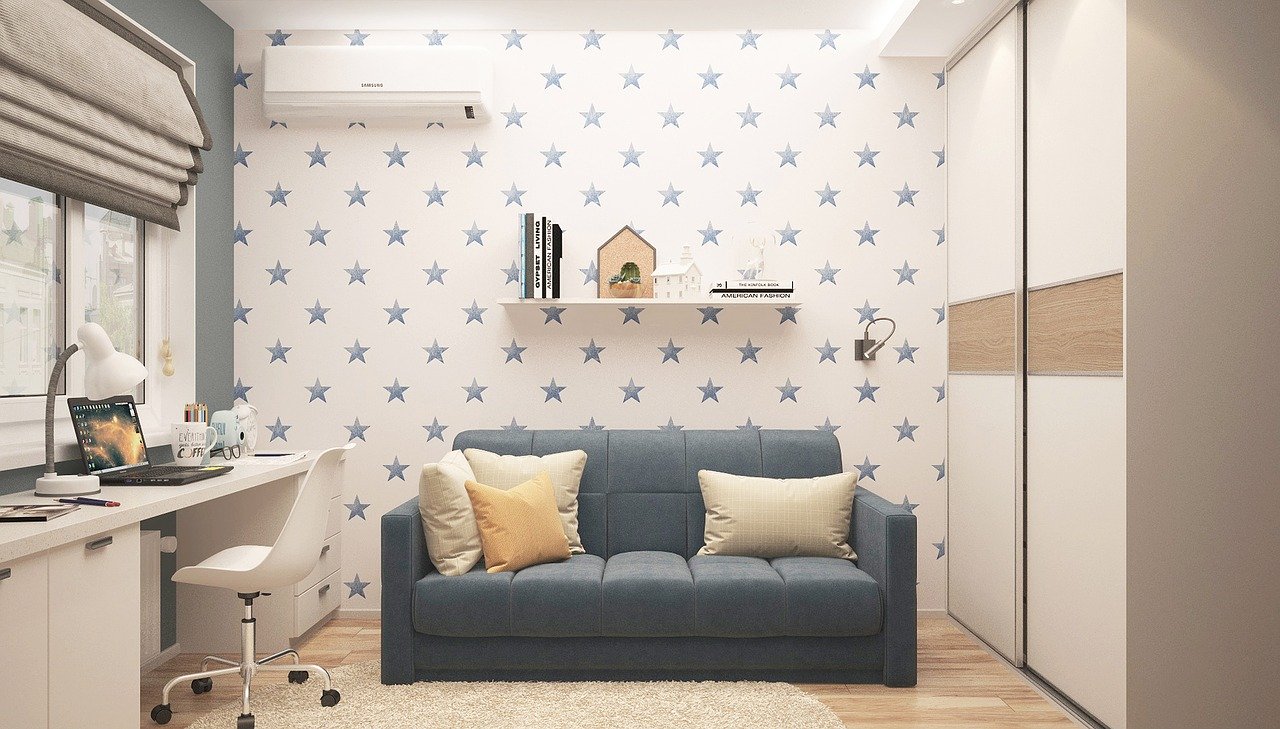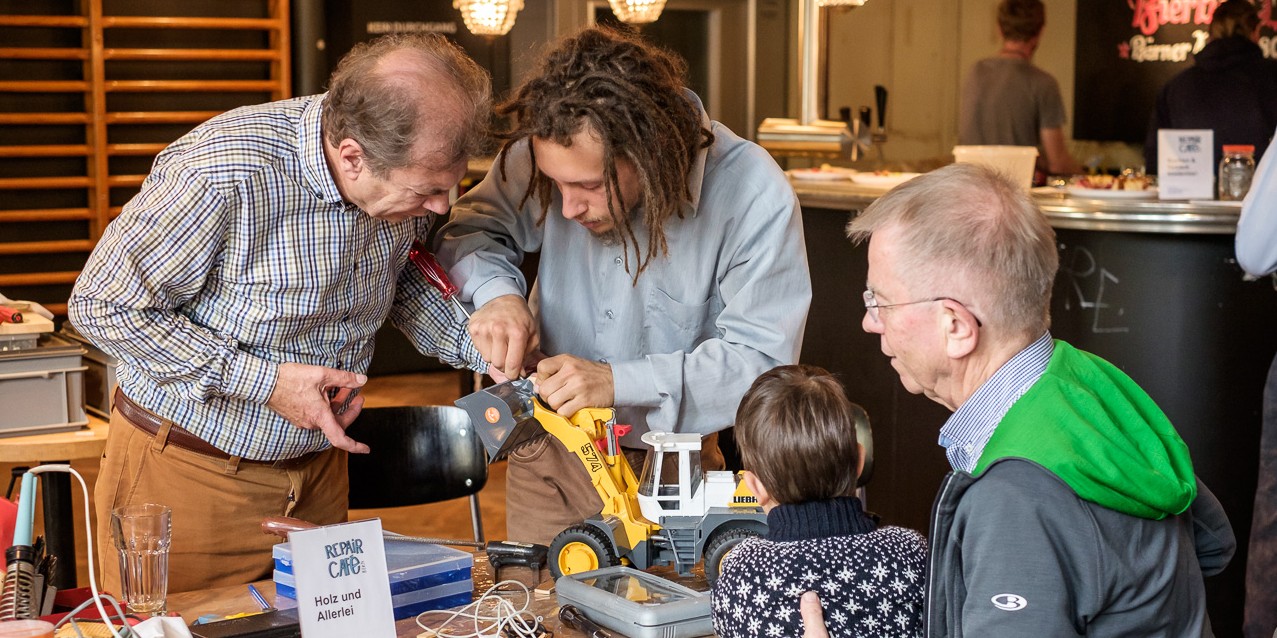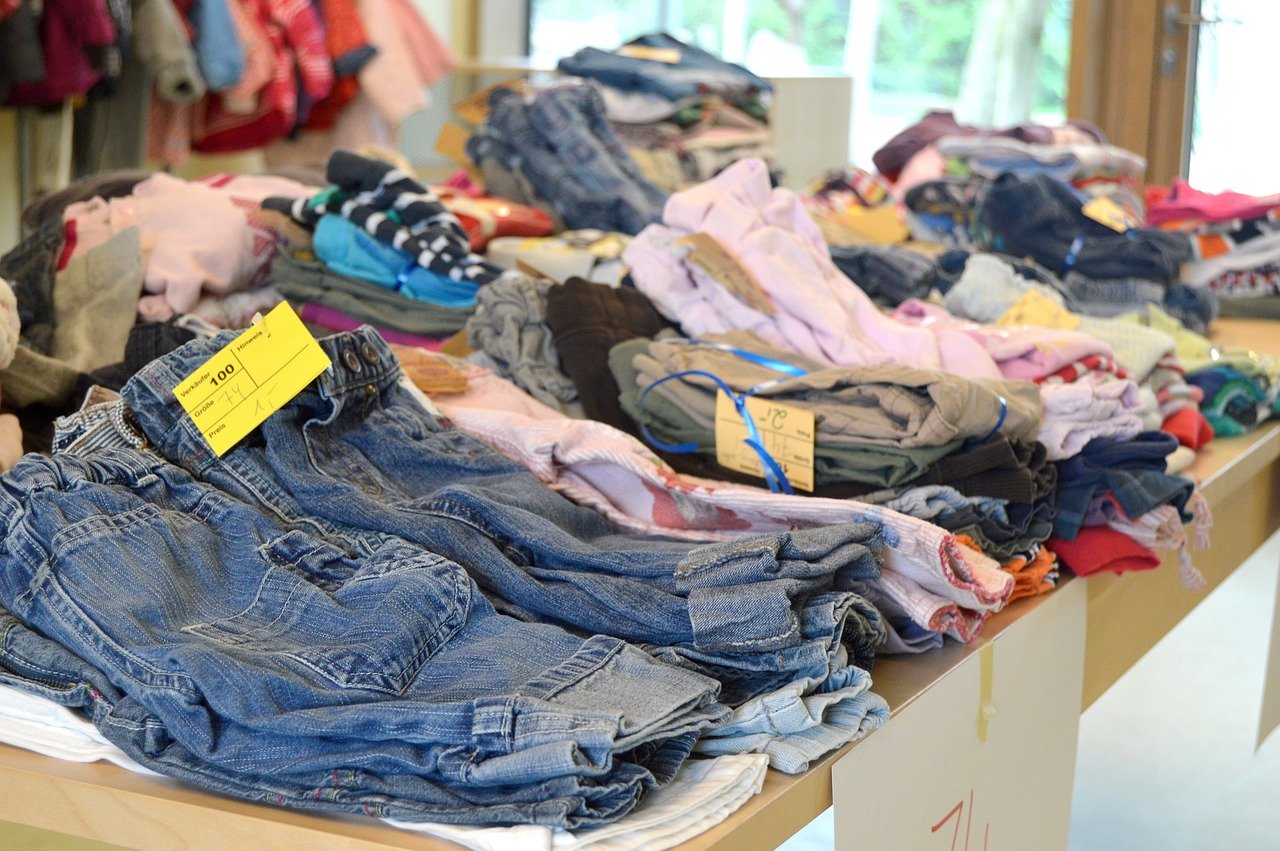Have you ever heard of the 100-Things-Challenge? It’s a challenge where you try to get by with only 100 things for a period of time you define yourself, such as a month. The number hundred might seem big at first. But if you count all your items, the amount suddenly seems tiny! Last week I went through my apartment and tried to count all my possessions for fun: In my bedroom alone, I quickly got over a hundred. This made me think! Do we really need so many possessions? And why do we always buy more? And what exactly do these large collections of things mean for our climate?
According to Swiss Radio and Television (SRF), a Swiss household owns an average of over 10,000 items and the number is increasing every year. That sounds like a lot! Why do we Swiss buy so many products? For one thing, we buy everyday items such as plates, cups, clothes or toiletries and usually a few extras of each – because you never know.

Secondly, there is the feel-good shopping. We all know it: you’ve had a hard week or you’ve been wanting to treat yourself for a long time and then you see a scented candle or another “beautiful” object that could bring you pleasure. These things quickly end up in your shopping basket and your mood rises. As soon as you are at home, however, you often have no time or desire to light the candle or use the object you have bought. So the brand-new things end up as decoration on the dresser or in the cupboard – and gather dust. At first, this doesn’t matter, because the purchase itself has already fulfilled its actual purpose to lift the mood! And so, more and more items are accumulating in our household. Some we really need, others we buy simply based on a whim.
Being able to treat yourself to something should continue to be possible. However, before every purchase, you should consciously remember that the production and transport of new products as well as the disposal of the old ones is associated with CO2 emissions. Thus, our consumer behavior contributes to CO2 pollution and climate change.
Buying something new even though the existing item is still intact or can be easily repaired? This does not have to be necessary! On average, a Swiss citizen throws away about 20kg of electronic devices and textiles per year, which are often still usable or could have been repaired with little effort. These additional heaps of waste cause new CO2 emissions that harm the environment and the climate.
Taking the entire life cycle of a mobile phone, for example, from production to use and disposal, half of the total CO2 emissions are generated during production. If we Europeans were to use our mobile phones one year longer instead of buying a new one straightaway, we could save 2 million tons of CO2 annually across Europe.
The same applies to our beloved blue jeans: in the production of such a pair of jeans, 15kg of CO2 is required in addition to 8,000 liters of water. Extending the life of a pair of jeans by patching holes or passing them on to friends and acquaintances helps to reduce the enormous climate impact of their production.
I very much welcome the fact that second-hand shops, repair cafés and sharing are becoming increasingly prominent in people’s minds. Sufficiency is increasingly becoming a trend. The idea of sufficiency helps me personally to shape my life more self-determined and consciously. It saves costs and also helps the climate 😉.
Are you now wondering how you can join in? The first step always starts with consciousness. Why don’t you take a moment and think about the things you have bought in the last month. Were these things indispensable? How often will you use them? Weekly or only once every six months? What items have you cleared out and thrown away in the last month? Were these items broken? Was it impossible to repair them?
Here are my tips for a sufficient lifestyle:
Just try it out and share with friends, because the most fun is when you do it together!
Sharing
- If you need something new, like a waffle iron for brunch, ask around in your circle of friends or in your neighborhood. Surely someone has a waffle iron and can lend it to you. Or you click through a sharing platform, where you can find many different products that you can borrow to save resources.
- Or if you like your friend’s new t-shirt and now you want to have the same one: why don’t you ask them to lend it to you instead of buying it yourself? This is much cheaper for you and your CO2 footprint will not increase.
Repairing
- Your vacuum cleaner broke? Buying a new one pollutes the climate and having the old one repaired costs too much? Why not stop by a repair café, where you can repair your household appliances and much more with the help of professionals. You can use the tools there for free and you can also buy the necessary spare parts on the spot.

Second-hand
- You need a new suit for a business event? But you don’t want to spend too much and also don’t want to burden the climate unnecessarily? Then why don’t you stop by a second-hand shop? You’ll be surprised what treasures you can find there. Here is a small selection by UBS of second-hand shops spread all over Switzerland.
- While clearing out your clothes you came across an old T-shirt whose color you don’t like anymore? Or you need new curtains in your room? How about taking the things you’ve sorted out to a second-hand shop or asking your friends and neighbors if they could use some of them?
- You can also easily post your sorted-out stuff on one of the countless websites, such as Ricardo, and resell it. Then you can even earn something on your old items and another person will save the CO2 emissions of a new purchase.

To me, sufficiency means conscious consumption, enjoying together, sharing and repairing. «Less is more»: you don’t need an infinite number of objects to be happy.


 Deutsch
Deutsch Français
Français Italiano
Italiano
